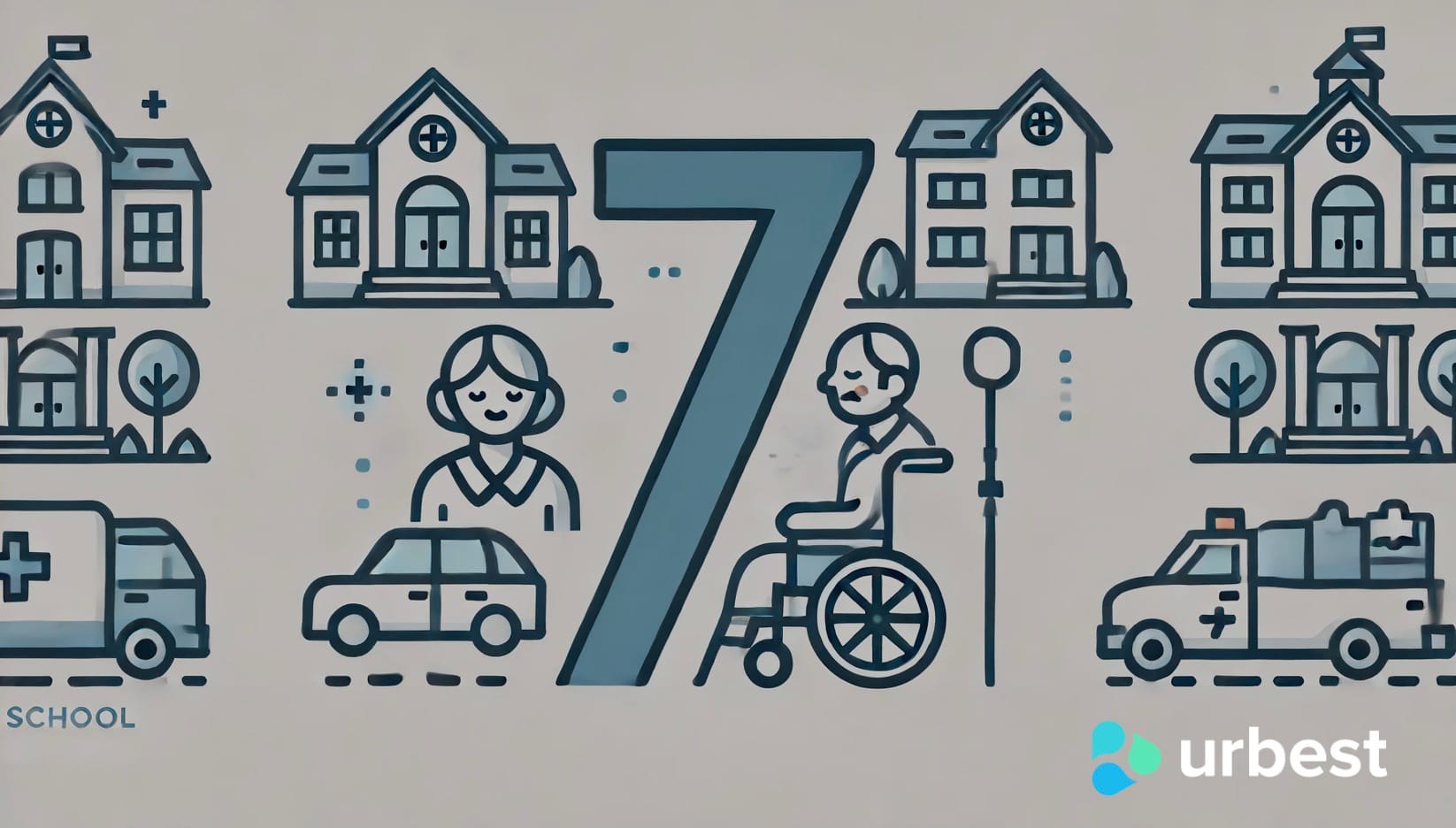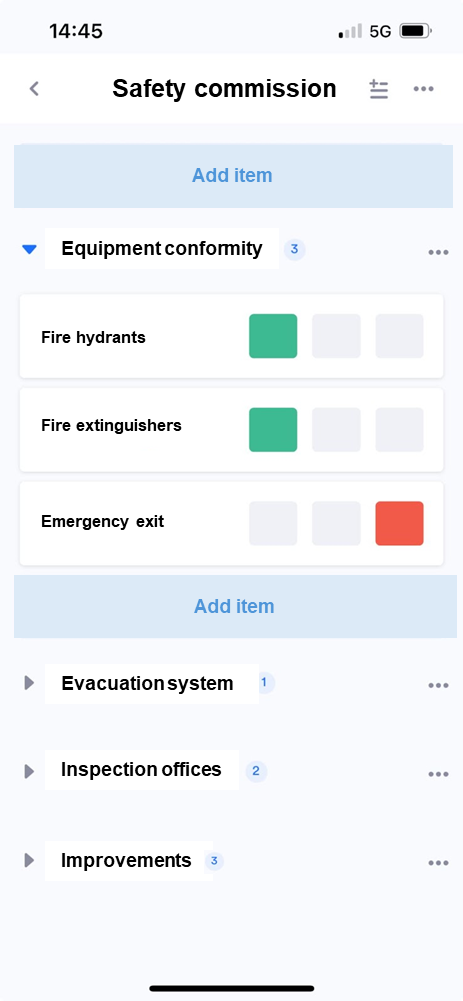7 Signs indicating the need for collaborative software for your Facility
Discover which everyday problems indicate a need for digitization in your facility. This article presents the most common challenges that facility managers overcome with Urbest.

Discover which everyday problems indicate a need for digitization in your facility. This article presents the most common challenges that facility managers overcome with Urbest.
- People submitting service request don’t know who to contact
When a facility grows to encompass several hundred people, it becomes difficult for newcomers to know whom to contact for services. This can become as challenging as an obstacle course, going from office to office until finding the right contact. Alternatively, a person may give up on requesting a service because they do not know who to approach.
Fortunately, it is now possible to bypass email or on-call phones by using a global app that serves as a single portal for requesting a variety of services. Users can navigate through a menu of categories that directly connects their request to the relevant department.
Typically, these include maintenance, logistics, cleanliness, catering, and contracted construction or inspection services.
- Discrepancy between what contractors should do and what they actually do
A contract between a company and a facility usually specifies a certain number of visits for maintenance or inspections. For example, a heating contractor might be scheduled to visit once a month. A security company might come twice a year to check the fire systems. The contract outlines the theory, but practice can differ, with visits being less frequent or even forgotten, and tasks left undone. This can lead to serious maintenance or liability issues in case of a fire or other problems with the buildings. To counter these risks, it’s possible to list and share all the tasks to be done in a contract. This ensures visibility on both the client (facility) and service provider sides. A contract will then lead to planned interventions (ranging from 2 to 20, depending on the size of the contract).
The advantage here is that tasks are automatically created at regular intervals and are visible to both the facility manager and the service provider. Until a request is marked as resolved with a comment and possibly a photo, the facility manager knows the work hasn’t been done or that the information hasn’t been shared. Service providers can have their own access with visibility on the service categories that concern them. Access is granted based on sites and categories of services.
Once there is shared visibility between the providers and the facility, no tasks can be forgotten. Additionally, the app allows for time-stamping to know when an action was taken. For contracts with SLAs and penalties, this helps to calculate response times and decide if penalties apply.
- You suffer from high turnover and a lack of information when an employee is on leave
Recruitment is challenging in the maintenance and service sectors due to job opportunities and wages. In 2024, the facility maintenance sector ranks fifth among professions struggling the most to recruit. This is not to mention kitchens and catering, which are also problematic for facility managers.
Top 5 recruiting sectors (2024, France):
In this context of constant changes among agents and technicians, it becomes critical to manage workload, interaction modes, and automate reporting and notifications. Urbest provides:
- A clear process for requesting a service and direct dispatching to the right people
- A list of recurring actions to follow even if the responsible person is on vacation, sick, or has simply left
- Automated reporting to alert managers and anticipate workloads that accumulate and ensure tasks are always progressing from week to week.
In summary, a software that structures exchanges significantly reduces the risk of losing critical employees who hold all the operational knowledge in their heads. With processes and task structuring in advance, you can ensure that newcomers quickly find their bearings and are operational from their first days on the job.
Discussion threads can even be used for training new arrivals so they understand the operational methods of their predecessors. For this, comments and photos are very useful to understand the context of past interventions.
- Multiplicity of interfaces: PDF, Paper, Email, SMS without consolidated view or reminder
A facility manager must juggle many tasks to follow:
- Requests from colleagues usually arrive by email, phone, or SMS
- Scheduled interventions with contractors come via email, from portals, or even unexpectedly when the contractor arrives
- Reservations that are compiled in PDF reports or calendar prints and are difficult to exploit
The accumulation of these unstructured tasks becomes very difficult to follow. Visibility is not consolidated. It’s impossible to search by keywords. Generally, there are no reminders unless they are created one by one in a calendar.
Fortunately, digital technology is here to simplify by centralizing tasks that are usually scattered. Gone are the days of spelunking through email inboxes to find a PDF or an Excel file. It is now possible to anticipate and have a clear view of everything that needs to be done in one place.
- You spend time going back and forth between your office and every spaces across the Facility
When a site is large in area, floors, or number of buildings, moving around can take up a significant part of a technician or team leader’s day. The time lost going back and forth to their office to consult a document or to be reachable by colleagues is considerable. A mobile app available on smartphones (or tablets) can counter these time losses. Useful information for handling an intervention is centralized and easily accessible on the phone. A technician can directly have the contact of the person making a request, the details with photos, comments, and even interact with the requester if there are clarifications needed. An agent or technician with a mobile app will therefore save time thanks to:
- Quick access in a few seconds to get the details of an intervention (reducing connection times and number of clicks)
- Real-time alerts when a request comes in with the ability to intervene immediately if nearby (reducing unnecessary travel)
- Photo taking and summary comments written or via dictation to accelerate intervention reports.
Ultimately, mobility with an app saves between 10% and 20% of the time spent on interventions. The percentage varies depending on whether one switches from a completely paper/email process or if one already has digital tools (like Google Sheets or old software).

- You never know if a task is truly resolved
Was the contractor here to do the work? Do I still have snag management to address after my compliance check visit? Was the director’s request from last week handled? These are all questions that can arise and cause stress, yet it is possible to effectively track actions and especially to have feedback on what has been done (or not). The principle is simple and is based on a ticketing tool with the creation of tasks that then follow a progression by status. You can choose to be notified or not when a task progresses. This allows for obtaining service completion slips or validations to enable invoice payments. A positive aspect of a collaborative platform is that the requester can also access the progress and is instantly notified when their request is in process or has been resolved. With this mode of operation, gone are the days of colleague reminder emails or phases of stress and frustration because some tasks have lingered for weeks or even months.
- Your last safety commission went poorly
Safety commissions, which occur every 2 to 5 years, are quite stressful if one is unprepared. This can be due to a lack of information to prove that regular checks have been made. Paper archives can also be difficult to follow given the number of controls to be performed and the various formats used by contractors or agents. Various people are involved in the commission and it is essential to show that everything is well managed in your facility. If you can share access to a collaborative app that tracks verifications and actions you have performed, your safety commission should be a walk in the park. Each of your coworkers will be able to see what interests them: fire risk, procedures, sports equipment, contractor reports… Here is an example of a checklist.

In addition to these checks, you can attach useful documents for consultation as in a Document Management System (DMS). As a bonus, you can format action plans for instructions/recommendations following a commission or suggestions from approved contractors. If you found these tips helpful and would like to discuss digitization for your facility, you can book an appointment directly by clicking here.
